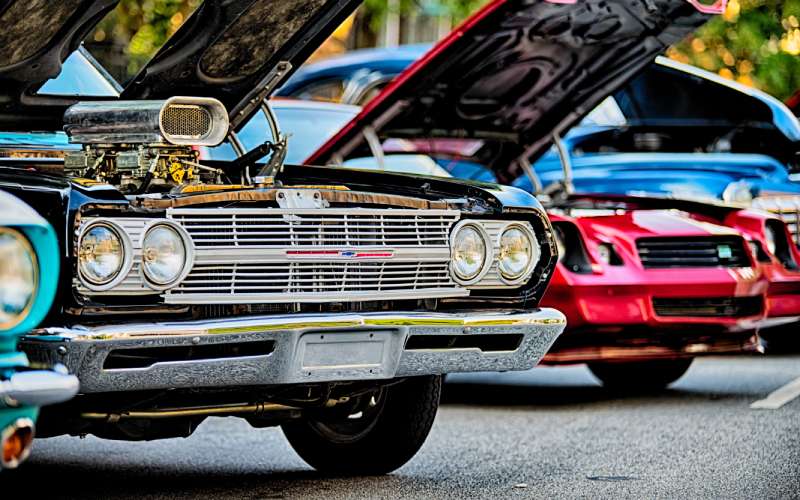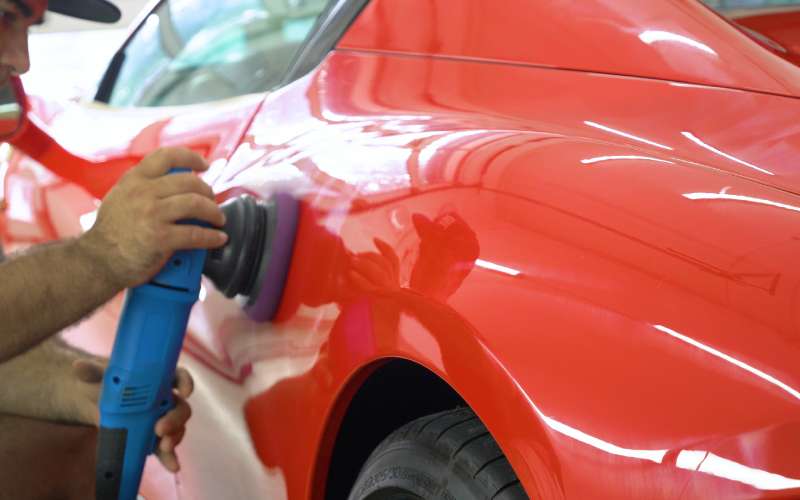A Step-by-Step Guide to Cleaning Your Classic Car

Owning a classic car is a joyful experience but requires dedication when it comes to upkeep and performance. Help your car shine in the driveway, on the highway, or at the car show by following our step-by-step guide to cleaning your classic car.
Gathering Your Cleaning Supplies and Preparing Your Vehicle

Before you begin, gather the right supplies: a bucket, microfiber towels, a sponge, car shampoo, wax, a vacuum cleaner, a leather conditioner, and a tire cleaner. Quality products make a difference, so avoid anything containing harsh chemicals.
Next, inspect your vehicle for chips, scratches, or rust spots, and address these issues before cleaning to prevent further damage. Park in a shaded area to avoid water spots and keep all your supplies nearby as you prepare to show your classic the love it deserves.
What To Avoid When Preparing a Vintage Vehicle for Cleaning
When cleaning a vintage vehicle, knowing what to avoid is just as important as having the proper techniques.
Avoid Harsh Cleaners
First and foremost, steer clear of household cleaners such as dish soap or glass cleaners made specifically for house windows. These products often contain harsh chemicals that can strip the paint or damage interior materials over time.
Why You Need To Avoid Using Dish Soap on a Classic Car
Using dish soap to wash a classic car may seem convenient, but it can damage the exterior and interior over time. Its strong degreasing properties can strip protective wax, leaving paint vulnerable to UV damage and fading. Additionally, it can harm rubber seals and plastic components, leading to expensive repair or replacement. It's better to use car shampoos designed for automotive care to clean and protect the vehicle without causing harm.
Be Gentle With Materials
Avoid using abrasive materials like hard brushes or rough cloth, which can scratch the delicate surfaces of your classic car.
Use Water Pressure Wisely
Limiting water pressure is also wise; high-pressure washers can force water into seams and cause rust if the vehicle isn't thoroughly dried.
Protect Chrome Parts
Finally, don't get cleaning solutions on chrome parts and trim, which can tarnish and corrode the surface.
The Effects of Cleaning Solutions on Chrome Parts
If cleaning solutions inadvertently come into contact with chrome parts, the surface may grow dull and lose its inherent luster. Over time, repeated exposure to inappropriate agents can result in pitting, where tiny holes appear on the chrome surface, compromising its smooth finish.
These surface imperfections detract from the vehicle’s appearance and make the chrome more susceptible to further degradation. Moreover, if the chrome parts are not adequately rinsed and dried, residual chemicals can leave behind oxidation deposits, accelerating rust development beneath the chrome layer.
Polishing and Waxing

Polishing removes minor imperfections and enhances shine. Apply polish with a clean, soft cloth, using small circular motions. After polishing, it’s time to wax. Waxing helps protect the paint and keeps it shining. Buff the wax with a microfiber towel.
Use Mild Products
When polishing and waxing your classic car, be mindful of what can harm the delicate surfaces. For instance, steer clear of abrasive materials or harsh products—these can easily scratch or dull the paint, especially on older cars. Also, avoid polishing or waxing in direct sunlight; the heat can dry the products too fast, leading to uneven results or stains. Always use a clean cloth to avoid reintroducing dirt that might scratch the paint. Lastly, take your time with the process—giving each inch of your car the attention it deserves will help you achieve that professional-grade finish.
Interior Detailing
Vacuum the interior thoroughly, reaching into every nook and cranny.
Key Areas To Focus On
When detailing the interior of your classic car, it's crucial to focus on a few specific areas for complete cleanliness.
Start with cleanining the leather, cloth, or vinyl seats, which often show wear and dirt buildup. Apply a good-quality leather conditioner for leather seats to nourish and preserve the material.
Next, concentrate on the dashboard and door panels. Use a gentle cleaner to remove dust and grime.
Don't forget about the carpets and mats; vacuum and spot-clean them thoroughly to maintain their appearance.
Finally, focus on the windows and mirrors to ensure crystal-clear visibility. Use a streak-free glass cleaner for the best results.
Cleaning the Windows
Clean windows enhance visibility and overall appearance. Use a car-specific glass cleaner with a microfiber cloth. Wipe in a circular motion to avoid streaks. Pay special attention to the edges of the windows, ensuring no residue remains.
Tires and Wheels
Tires and wheels complete the look of a classic car. Use a dedicated tire cleaner to remove dirt and brake dust. Scrub gently with a brush, being mindful of intricate wheel designs. Rinse thoroughly and dry with a towel. Finish with a tire dressing to add shine and protection.
Inspecting Under the Hood
When inspecting under the hood of your classic car, pay close attention to several key areas to ensure everything is in optimal condition. What you want to do first is check for any leaks around the engine, including oil, coolant, and brake fluid. Inspect the belts and hoses for signs of wear, cracks, or brittleness, as these components can degrade over time. Look at the engine's surface for any buildup of grime or dirt, which can indicate potential leakage or neglect.
Additionally, you should examine the battery for corrosion around the terminals and ensure all electrical connections are secure. Regularly checking these elements will help maintain the performance and longevity of your classic vehicle.
Storing Your Classic Car
Proper storage is crucial for maintaining your classic's condition.
Three Must-Have Items for Storing a Classic Car
Breathable Car Cover
A high-quality, breathable car cover is essential to shield your classic car from dust, dirt, and moisture. Choose a cover based on your car's make and model to ensure a snug and protective fit.
Dehumidifier
Moisture is a classic car's worst enemy, potentially leading to rust and mold. A dehumidifier in the garage helps keep the area dry, even with minimal ventilation.
Battery Tender
A battery tender or maintainer is crucial to keep the battery in top shape during storage. It prevents the battery from losing charge over time, allowing your car to start once you're ready to take it out for a drive.
Scheduling Routine Cleanings
Incorporate cleaning into your routine to maintain your classic car's beauty. Regular cleanings prevent buildup and keep your vehicle in top shape.
Tips for Planning Routine Cleanings
Establish an effective cleaning routine tailored to your classic ride’s usage and environmental exposure. Create a cleaning schedule, prioritize thoroughness over frequency, and organize your supplies. Consider seasonal factors as well when scheduling detailed cleanings before storage periods. These tips will help maintain your car's cleanliness and value over time.
Vintage Longevity Starts at Driven Racing Oil
A step-by-step guide to cleaning your classic car ensures it remains a showstopper for years. By following the steps outlined above, you can keep your vintage beauty in immaculate condition inside and out. From exterior washing to interior detailing, every aspect matters.
For optimal performance, consider the oil you use. Driven Racing Oil offers classic motor oil that enhances your engine's longevity. Our expertise guarantees high-quality lubricants without harmful additives. Improve your vintage car's condition by choosing the best oil on the market.

You must login to post comments.